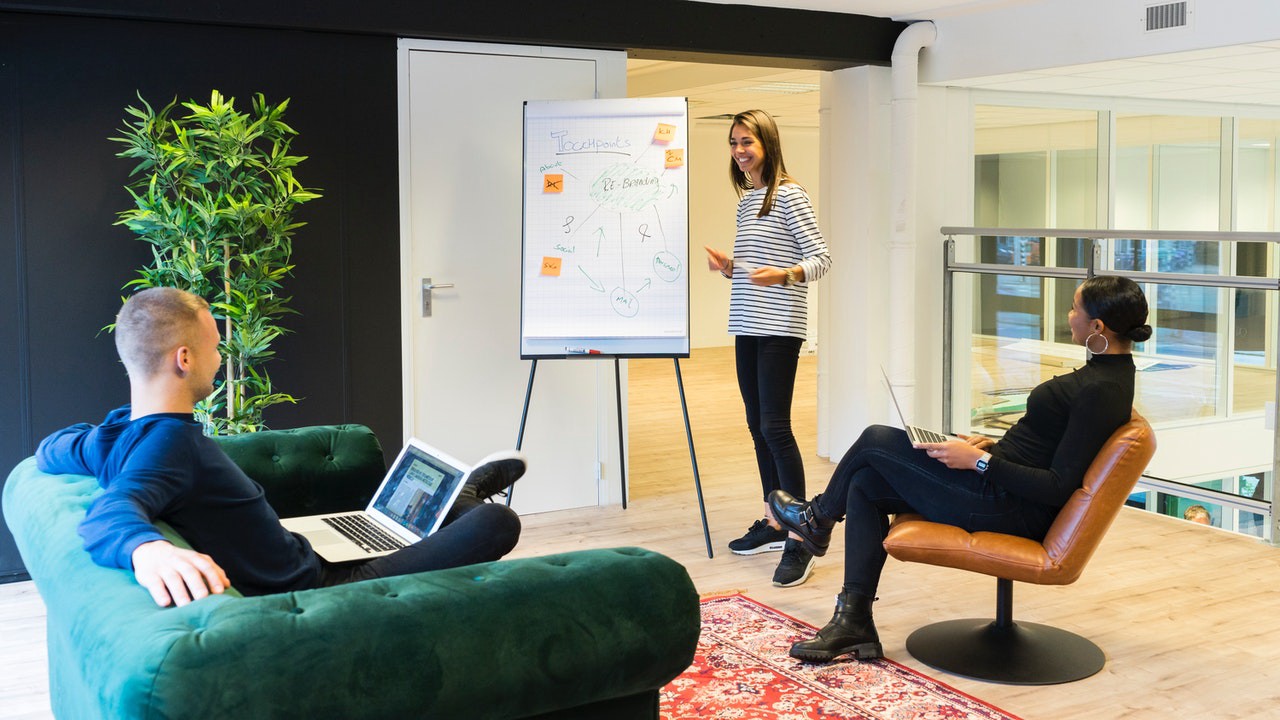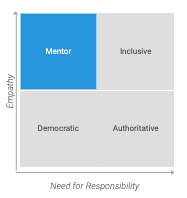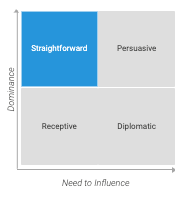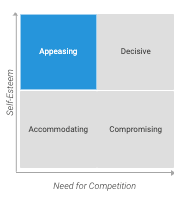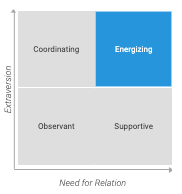Behaviors Uncovered: Leadership, Communication, Conflict Management and Team Contribution
How can employers understand how someone will behave in a professional context? Do organizations have to rely on a trial-and-error approach to hiring and management, or is there a way to make better informed decisions based on science?
Thankfully, years of behavioral modeling have left a strong legacy in various fields of psychological research, from social psychology to behavioral economics. Using the progress in this area as a knowledge base, we were able to combine two key areas of results from our MyPrint® questionnaire — personality and motivational traits — to uncover the likely behaviors of individuals in professional settings.
From Personality and Motivations to Behaviors
MyPrint reports consist of three main areas of focus: Personality, Motivations and Behaviors:
- Personality traits correspond to the attitudinal & emotional characteristics underlying people’s stable behaviors.
- Motivations correspond to the desires and needs triggering, orienting and maintaining an individual’s behaviors towards a given objective.
- Behaviors represent the ranges of observable actions made by individuals in conjunction with their environment.
The 11 behavioral dimensions of MyPrint are displayed as score matrices resulting from the combination of personality and motivation dimensions of the assessment. Therefore, the behavioral styles of MyPrint are predicted based on the scores (high or low) that an individual has obtained on the personality and motivation dimensions crossed together. In short, these analytical grids give insights for understanding why an individual tends to foster a particular pattern of actions and how they maintain it.
As we uncover the science behind predicting behaviors in the workplace, we begin with four key dimensions for employers focusing on better understanding group dynamics within their teams: Leadership Style, Communication Style, Conflict Management and Team Contribution.
Leadership Style
Leadership Style can be described as the way that a person motivates their peers to contribute to the effectiveness of their organization. This applies to individuals formal leadership positions, information leadership positions, or people who might not appear to have any leadership roles at all. Anyone can influence their peers and impact their organization.
There are four styles of leadership, derived from the combination of the “Empathy” dimension of personality and the “Need for Responsibility” dimension of motivation:
- Mentor (Empathetic, Need for Sharing Responsibility): Individuals who are Mentor Leaders build emotional bonds by empowering others and offering plenty of positive feedback.
- Inclusive (Empathetic, Need for Taking Personal Responsibility): Individuals who are Inclusive Leaders drive necessary changes by mobilizing everyone toward a common vision.
- Democratic (Individualistic, Need for Sharing Responsibility): Individuals who are Democratic Leaders guard themselves against backlash by letting others give their inputs upstream.
- Authoritative (Individualistic, Need for Taking Personal Responsibility): Individuals who are Authoritative Leaders tend to demand compliance since they would take full responsibility for issues that may arise.
Communication Style
Communication Style can be summarized as the way that a person sends a message to one or many peers, verbally or otherwise. For employees, there’s an ever-growing number of ways to communicate beyond just face-to-face interaction. Understanding the way an individual tends to express their thoughts and opinions during in-person conversations, emails, video calls and more can help predict their future interactions in the workplace.
There are four styles of communication, derived from the combination of the “Dominance” dimension of personality and the “Need to Influence” dimension of motivation:
- Straightforward (Assertive, Need to Open Up to Others’ Opinions): Individuals who are Straightforward Communicators are inclined to clearly state their ideas while keeping a neutral tone and being respectful of others’ views.
- Persuasive (Assertive, Need to Sway Others’ Opinions): Individuals who are Persuasive Communicators are inclined to dominate others in interactions by openly convincing them to see things their way.
- Receptive (Compliant, Need to Open Up to Others’ Opinions): Individuals who are Receptive Communicators are inclined to speak softly in interactions, and mostly listen to others’ points of views in order to please them.
- Diplomatic (Compliant, Need to Sway Others’ Opinions): Individuals who are Diplomatic Communicators are inclined to control the course of discussions to their advantage by placing underlying messages in their spoken words.
Conflict Management
Conflict Management can be described as the way that a person tries to limit the negative aspects of a confrontation while increasing its positive impacts. Conflict doesn’t always take place in the form of direct confrontation. Being aware of the ways in which individuals will handle situations where there are differing opinions — both big and small — can help leaders facilitate as needed so that certain individuals’ voices and opinions are being heard over the individuals who might be more confident and determined to win.
There are four behavior types when it comes to conflict management, derived from the combination of the “Self-Esteem” dimension of personality and the “Need for Competition” dimension of motivation:
- Appeasing (Confident, Need to Cooperate): Individuals who are Appeasing in Conflict tend to dig into the underlying concerns and consider the views of others.
- Decisive (Confident, Need to Win): Individuals who are Decisive in Conflict tend to settle it by asserting their own solution.
- Accommodating (Modest, Need to Cooperate): Individuals who are Accommodating in Conflict put aside their own needs in order to keep the peace with others.
- Compromising (Modest, Need to Win): Individuals who are Compromising in Conflict tend to ignore or withdraw from it rather than facing it.
Team Contribution
Team Contribution can be summarized as the way that an individual cooperates and works with others in a group setting in order to achieve organizational goals. This is not only useful for individuals who work in the same department or formal team, but for understanding the role a person tends to play even in the informal group projects and activities that occur in the workplace.
There are four ways individuals can approach team contribution, derived from the combination of the “Extraversion” dimension of personality and the “Need for Relation” dimension of motivation:
- Coordinating (Extroverted, Need for Privacy): Individuals who are Coordinating teammates expect efficiency, focus on goals and coordinate people together
- Energizing (Extroverted, Need to Socialize): Individuals who are Energizing teammates get excited and draw others in with enthusiasm, while showing a relatively short attention span.
- Observant (Introverted, Need for Privacy): Individuals who are Observant teammates focus on content, and are likely to ask others about their expectations regarding their role in the process.
- Supportive (Introverted, Need for Socialize): Individuals who are Supportive teammates are loyal team players, by actively listening, discussing and defending the different views of others.
The behaviors results of MyPrint help in understanding the ways in which individuals actually act or conduct themselves, especially toward others. This knowledge can be invaluable in building a more productive workplace.
In our next entry in our three-part Behaviors Uncovered series, we investigate three areas that are critical to the development of highly-effective problem solving teams — creativity, work and learning styles.
Interested in uncovering more about how behavior profiles can help you understand how someone will act in a professional setting? Discover the science behind MyPrint by clicking here.
Are Remote Workforces Shaping a “New Normal”?
At times like this, it can be difficult to see the light at the end of the tunnel, as our personal and professional lives are sent in disarray as we cancel, adjust and adapt. It is important to remember during this difficult and complicated time that we WILL get past all of this, and things will go back to normal. But what exactly does normal mean? Of the adaptations we make in business and at home over the course of time to come, what residual long-term impacts will this have on how we communicate, perceive, socialize and work?
To gain insights on the latter, we spoke with an expert in the world of work, Andrew Limouris, the global CEO of Talentoday and CEO of Medix, a staffing company based out of Chicago, for his opinions on how the paradigm of work might shift.
What immediate impacts have you seen from your purview in staffing on how organizational operations have adjusted at this time?
“Obviously with the early warnings of an imminent social isolation order, the very first shift we noticed was internal meeting cadence and structure. People became more conservative and concise in conversations, and organizations scrutinized which meetings were truly necessary face-to-face versus over email. Then came the shift to entirely remote workforces. Organizations needed to entrust their teammates to carry out their duties in remote settings, therefore adjusting communication and in some cases accountability measures. Individuals needed to self-discipline and set up their day to achieve success in sometimes distracting environments. Technological accommodations had to be made on organizational levels. And organizations clamored to figure out how to keep team culture alive and remove collaborative barriers that could be achieved through technology now that physical barriers were imposed. The key for everything has been understanding: understanding who your people are- both their hard AND soft skills, understanding who your managers are, understanding the environments that make them successful, and understanding their viewpoints and perspectives.”
What external impacts has that had on organizations, especially those like yours in the services industry?
“For Medix, we serve two different groups of ‘clients’: the talent we place and the companies we place them at. For interviewing talent, it is our literal job to ensure we understand who they are, their aspirations, their motivations, their strengths and weaknesses, to place them in environments and opportunities they will thrive in. Shifting to complete online interviewing adds just one more layer to chip through in getting to truly know someone. On a company/client group level, with all meetings being switched to virtual, organizations find it that much more imperative to understand goals and intentions as early as possible in a conversation in order to maximize the impact of virtual meetings that tend to have enough distraction and mental interruption as is. It isn’t insurmountable, but it has been a challenge.”
What have been the positive ramifications of these changes?
“I believe organizations are finding new efficiencies that might not have existed before. Our communication has become more concise, and by virtue, oftentimes more powerful. One beautiful thing that has emerged in organizations is trust. Companies are setting up the accountability infrastructure for truly efficient and empowered teams. Employees tend to appreciate this autonomy, which can reap benefits in increased engagement and psychological safety with their places of work.”
What are some of the challenges?
“Operationally speaking, it is already intensely difficult to source, screen, hire, onboard, motivate, engage and grow effective teams. If it was easy, companies like Medix or Talentoday wouldn’t exist. The only way to do this effectively, as I mentioned, is to have a deep, robust understanding of who a person intrinsically is- not just what’s on their resume. Not just what they tell you in annual reviews. Adding a veil of technology only intensifies those challenges. My biggest fear regarding remote work is and always has been the impact it could have on our culture. Maintaining team collaboration and a cohesive vision in a remote environment is tough.”
What are your thoughts on the long-term impacts and how to handle them?
“It’s most organizations’ goal to achieve operational and financial efficiencies, so as companies spend the months ahead figuring out how to maximize their teams’ time and energy, I would not be surprised to see less lengthy meetings in boardrooms in the future, and many more flexible work programs surface. If they prove to be effective operationally, as well as motivating or incentivizing to employees, I would expect employers who might have been adverse to them in the past experimenting with implementing more widespread remote offerings to teammates. The caveat is going to be to continue to balance those efficiencies and benefits with the costs and risks I mentioned. What can be achieved through technical skills can sometimes be interrupted with soft-skills incongruencies due to environment and work styles, and aligning individuals with roles, teams and cultures that don’t need physical presence to be effective will be increasingly important.”
With still uncertain times on the horizon, one thing that is certain is that for employers and citizens at large, we will want to spend this time deepening our understanding of our companies, our teams, our social circles and ourselves, in order to best adapt to the potentially long-term or in some cases even permanent aftermath to our workstyles and lifestyles in general.
If you’re interested in learning more information about Talentoday, please visit www.talentoday.com or contact our experts at contact@talentoday.com.


